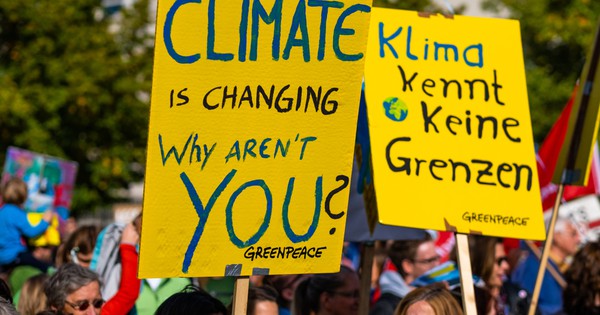7 high-impact lifestyle changes to reduce greenhouse gas emissions

If 10 percent of Americans adopted these 7 changes, we could cut domestic emissions by 8 percent in 6 years.
At the end of 2019, lexicographers crowned “existential” as the Word of the Year. “Notable among searches was existential,” they wrote. “It captures a sense of grappling with the survival – literally and figuratively – of our planet, our loved ones, our ways of life.”
As Swedish activist Greta Thunberg said in a speech to the United States Congress, “I have a dream that the people in power, as well as the media, start treating this crisis like the existential emergency it is.”
And indeed, we are in an existential pickle. The signs of our climate crisis are hard to ignore, when, for example, HALF A BILLION animals have succumbed to Australian bush fires since September, thanks to drought and record-breaking high temperatures. Horrid scenes from the ravaged continent look like fictional scenes from a dystopian nightmare.
It would be really, really great if everyone were taking this seriously. But alas, we are a species full of folly – and some countries are actually going backwards in terms of climate policy. Hi, USA.
The U.S. emits 6.6 gigatons of carbon equivalent annually, which comprises 15 percent of global emissions, according to the Center for Behavior and the Environment, which has published an in-depth report looking at high-impact ways that individuals can help mitigate the crisis.
“As a major emitter, the U.S. has an opportunity and a responsibility to make a real difference by decreasing its emissions,” note the authors of the report.
They point out that any solution to the climate crisis must include the U.S. dramatically reducing its greenhouse gas emissions, noting that strong climate policies are an essential pathway to achieving necessary emissions reductions.
“However, a focus on policy alone ignores the breadth of available pathways for action and the urgency of acting on a faster timeline than the policy process often allows,” the authors write, adding:
Actions taken voluntarily at the individual and household level can significantly contribute to overall emissions reductions and can do so in the absence of policy.
And with that in mind, they crunched the numbers to prioritize actions, while applying behavioral science insights to figure out which might be the most effective routes to individual action. The seven behaviors they came up with have a “high impact on carbon emissions, are suitable for intervention focused on behavior change, and have significant potential for adoption.”
They found that if just 10 percent of the U.S. populations adopted these changes, the country could cut total domestic emissions by 8 percent in the next six years. They also note how ambitious a number 10 percent is, showing the effect of media-based campaigns on health behaviors: The biggest change from such campaigns was 15 percent for seat belt use.
Anyway, that was a long path to the good stuff: The high-impact things we can do as individuals to reduce greenhouse gas emissions. So without further ado, what we can do – with comments quoted directly from the report:
1. Purchase an electric vehicle
By the most recent available figures, the U.S. consumes more refined petroleum than any other country in the world, the majority of which goes to transportation. Given that much of existing U.S. infrastructure is built around passenger vehicle use, improvements to public transportation alone will not decarbonize the transportation sector. Transitioning new car purchases to electric vehicles (EV’s), in tandem with decarbonization of the energy grid, is one important pathway to reduce passenger vehicle emissions.
2. Reduce air travel
Per passenger-hour, the climate impact of air travel is a factor 6 to 47 times higher than the impact of car travel. Emissions from aviation have a climate forcing impact beyond carbon dioxide, since other emissions such as water vapor and nitrogen oxides have additional warming effects. While the International Civil Aviation Organization (ICAO) has committed to carbon neutral growth by 2020, primarily via increased fuel and flight efficiency, we will need to curtail demand to reduce overall emissions from air travel.
3. Eat a plant-rich diet
U.S. residents consume almost four times the beef per capita as the global average. As beef is the most greenhouse gas (GHG) intensive protein in the world (with, for example, 20 times the impact on land use and GHG emissions of beans), this behaviour is as unsustainable as it is unhealthy. While Americans have been switching to consuming more chicken, which is much less GHG intensive, overall meat consumption in the U.S. is rising. Meanwhile, the proportion of vegetarians and vegans in the U.S. has not shifted in 20 years. More people do not need to be vegetarian to reduce the overall GHG impact of U.S. diets. More people simply need to eat less meat than they currently do.
4. Offset carbon
U.S. consumers have one of the highest per capita GHG footprints at around 15 MtCO2e annually. Though a high proportion of personal emissions can be reduced or eliminated with lifestyle changes, many of which are outlined here, some personal emissions present too high a barrier to eliminate or reduce. Purchasing third-party verified carbon credits can help offset one’s carbon footprint by financing the reduction or sequestration of GHGs in another sector of the global economy. With vetted carbon credits as a comparable alternative to emissions reductions, individuals offsetting their personal emissions could result in a very large overall decrease in net global emissions. Even among U.S. residents who believe that their personal emissions have an impact on climate change, only 1 in 10 have purchased a carbon credit, making this a good candidate avenue for increased engagement.
5. Reduce food waste
Around one third of food produced is never eaten as a result of food loss and waste. Food loss and waste contribute to GHG emissions at every stage of the food cycle, from emissions caused by fertilizing and transporting food that is never eaten, to emissions from wasted food if it ends up in a landfill rather than being composted, not to mention packaging and water waste. In the U.S., the problem is primarily one of waste, which is concentrated in retail and consumption. Overall average food waste in the U.S. is estimated at 400 pounds per person, per year. Since our assessment is of individual and household behaviors, we elected to focus on reducing household food waste and increasing composting.
6. Tend carbon-sequestering soil
Carbon-sequestering agriculture is the one productive-sector strategy in our final prioritization. While this behavior does not fit neatly with the others in terms of addressable audience, it fully performs within the core criteria of our prioritization. Addressing farming behavior has a high emissions reduction potential, is U.S. relevant, and is backed by sufficient evidence from behavioral science. Although the audience for this behavior, farmers, is a specialized demographic, we nevertheless consider a switch to carbon-sequestering soil practices an individual behavior, as farmers are individual actors and the decisions they make about their practices follow the same behavioral mechanisms as other behaviors on this list.
7. Purchase green energy
In 2018, about 60 percent of the electricity generated in the U.S. was from fossil fuels, primarily natural gas and coal. Electricity generation represents around 30 percent of U.S emissions, on par with transportation. Meanwhile, the costs to install rooftop solar panels have fallen by around 70 percent since 2010. Rooftop solar, solar heating, and green energy purchasing can significantly decrease household GHG emissions and potentially alleviate energy insecurity.
See? That wasn’t so bad. Buy an electric car, fly less, eat more plants, buy carbon offsets, don’t waste food, support soil-friendly farms, and use solar or buy some wind or hydro-powered electricity. Just one out of 10 of use need to do it, and hey, maybe two out of 10 can do half of them for the same impact.
Given how depressing and dire the world may seem right now, we as individuals are not helpless – and that is a hopeful thing following the year defined as “existential.”
As the authors write, “Our results indicate that, without making dramatic lifestyle changes and in the absence of sweeping new policies, reasonable, individual actions by a small portion of Americans could nevertheless have a measurable, substantive impact on reducing national emissions…”
To see this kind of personal action happening in real time, follow TreeHugger writer Lloyd Alter as he tries to live a 1.5 degree lifestyle, limiting his carbon footprint to 2.5 tonnes.
For more information on each of the changes, see related stories below. And to read more, download the full report in PDF: CHANGING BEHAVIORS TO REDUCE U.S. EMISSIONS: Seven Pathways to Achieve Climate Impact.
If 10 percent of Americans adopted these 7 changes, we could cut total domestic emissions by 8 percent in 6 years.
Please enable JavaScript to view the comments.







